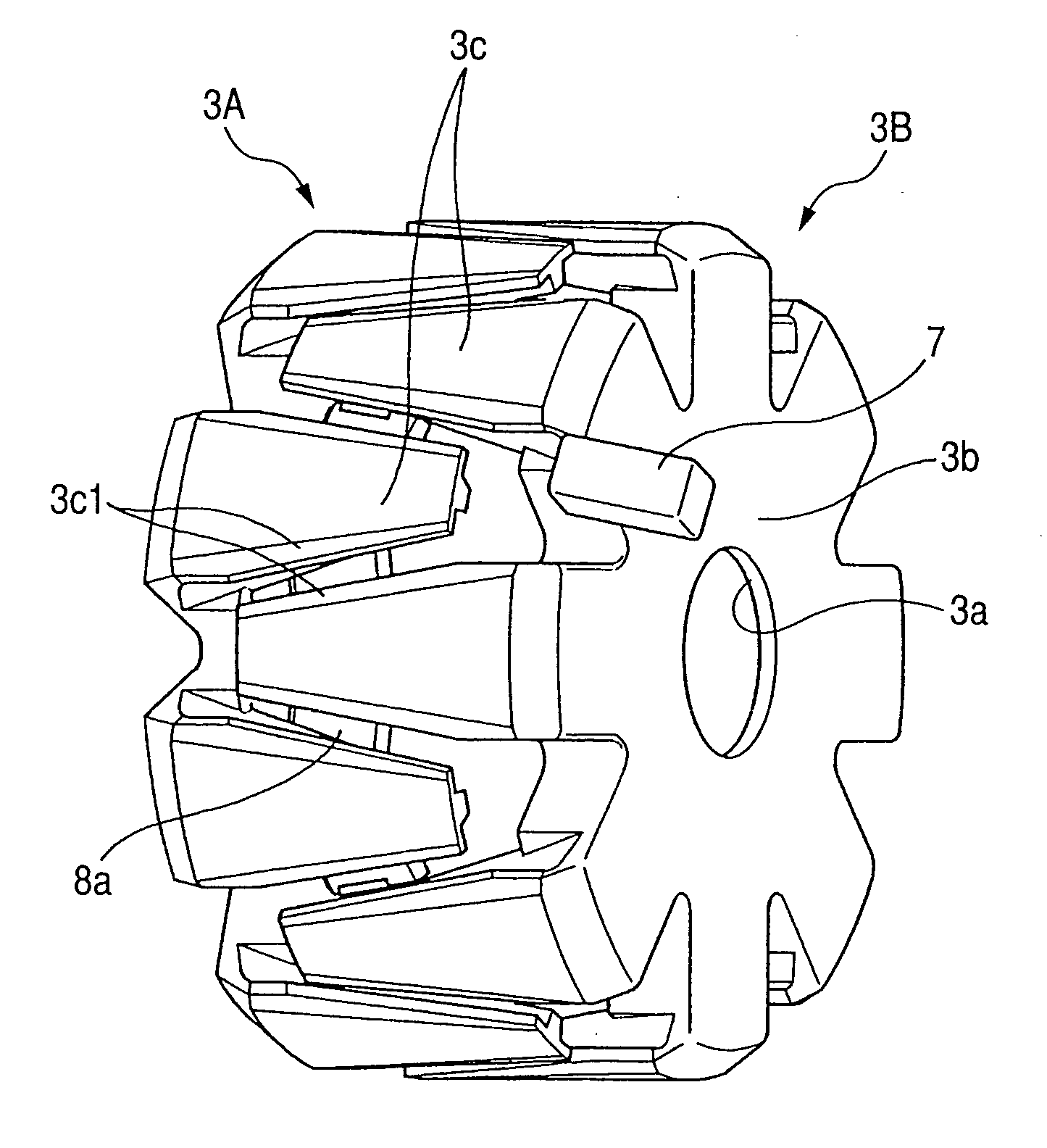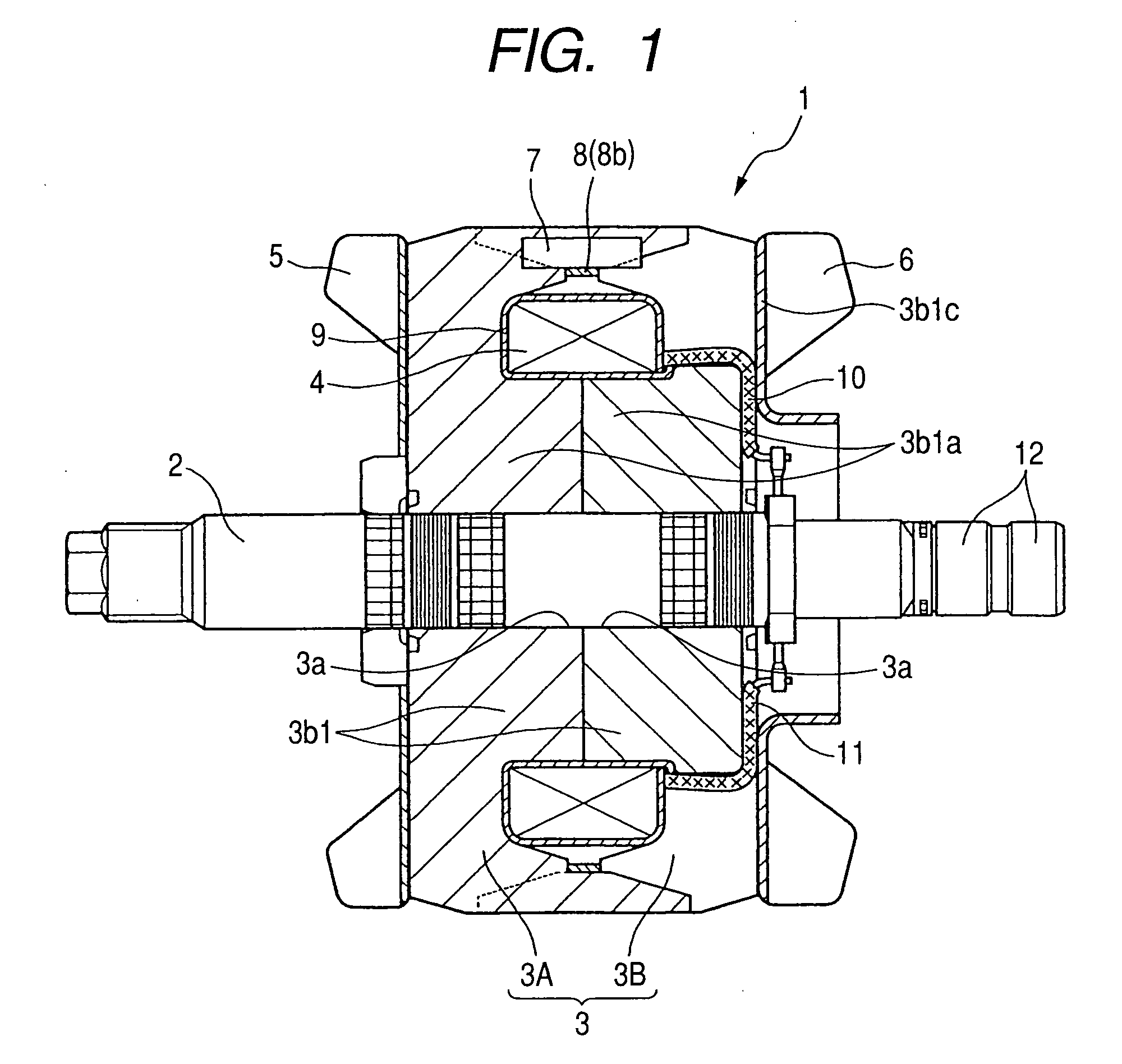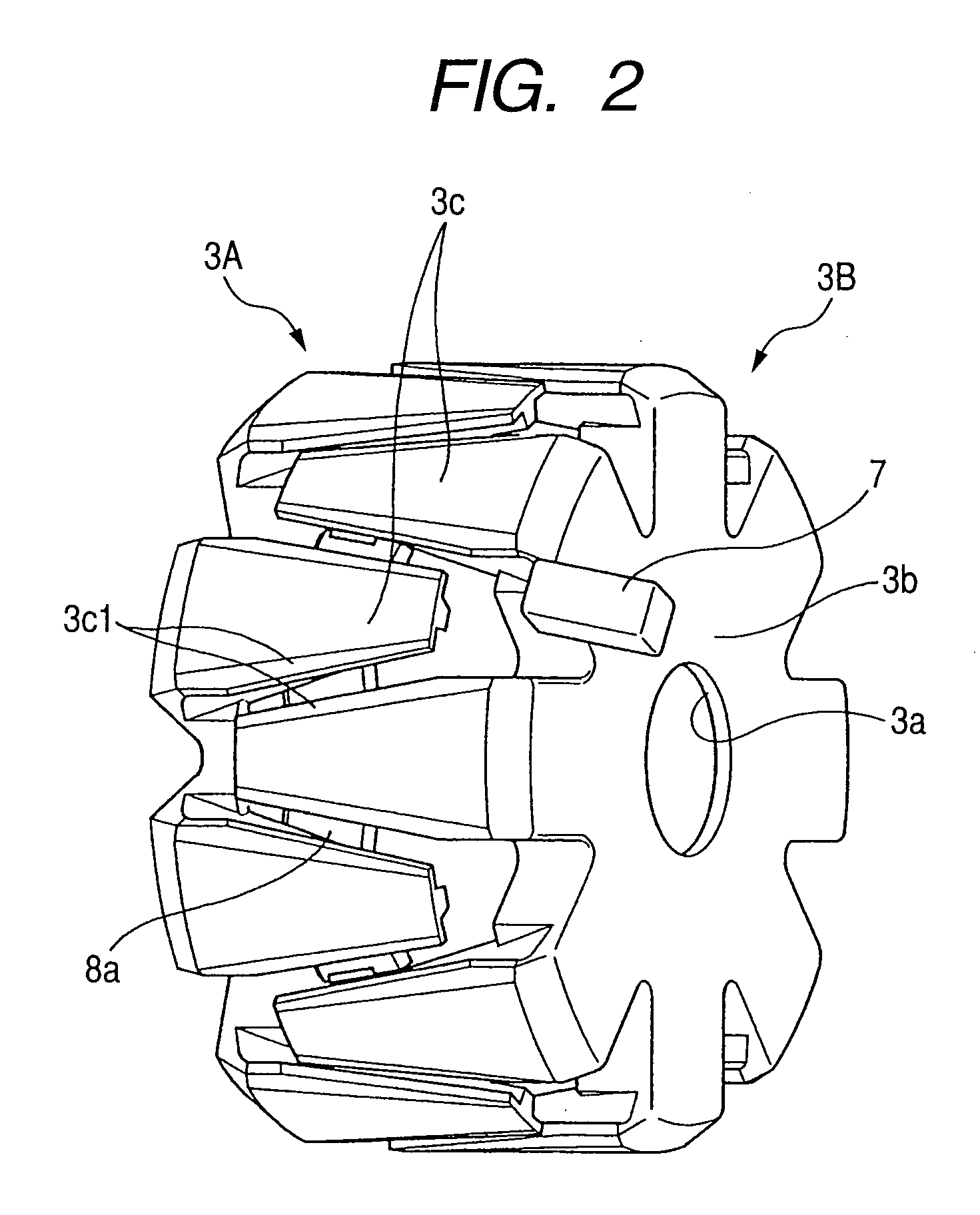Rotor for electric rotary machine
a rotary machine and rotor technology, applied in the direction of stator/rotor body manufacturing, magnetic circuit rotating parts, magnetic circuit shape/form/construction, etc., can solve the problems of increasing production costs, damage to permanent magnets, and difficulty in inserting permanent magnets, so as to increase the length of the magnet supporting segment and increase reliability
- Summary
- Abstract
- Description
- Claims
- Application Information
AI Technical Summary
Benefits of technology
Problems solved by technology
Method used
Image
Examples
first embodiment
[0125]A first embodiment will be described below with reference to one example of a rotary electric machine as applied to a vehicle alternator.
[0126]FIG. 1 is a cross-sectional view of a rotor 1 serving as a field magnet of the vehicle alternator.
[0127]The rotor 1 includes a rotary shaft 2 rotatably supported with a housing (not shown) by means of bearings (not shown), a pair of field iron cores 3 (3A, 3B) fixedly mounted on the rotary shaft 2, a field winding 4 wound on the field iron cores 3, cooling fans 5 and 6 fixedly secured to axially facing end faces of the pair of field iron cores 3, a plurality of permanent magnets (with sixteen pieces with the present embodiment and hereinafter abbreviated as “magnets”) 7 each assembled between each pair of field iron cores 3, and a support ring 8 for supporting the magnets 7 at radially facing inner circumferential areas of the rotor 1.
[0128]The rotary shaft 2 has one axial end (on a left hand side in FIG. 1) carrying thereon a pulley (n...
second embodiment
[0160]FIG. 12 is a plan view showing how the magnets 7 are assembled in place.
[0161]The first embodiment has been described above with reference to an example in which the supporting ring 8 is preliminarily located on the claw-shaped magnetic poles 3c at the inner peripheral sides thereof and, subsequently, the magnets 7 are inserted to the magnet accommodating spaces for assembly. A second embodiment will be described below with reference to another example in which the magnets 7 are assembled before the pair of field iron cores 3 are assembled together.
[0162]First, of the pair of field iron cores 3, either one of these field iron cores 3, i.e., for instance, the supporting ring 8 is located on the claw-shaped magnetic poles 3c of the field core 3A.
[0163]As shown in FIG. 12, in consecutive step, the magnets 7 are inserted to radial compartments each specified between the holder portion 3c1, formed on each claw-shaped magnetic pole 3c, and each magnet supporting segment 8a in a radi...
third embodiment
[0166]FIG. 13 is a cross-sectional view of the claw-shaped magnetic poles 3c, the magnets 7 and a supporting ring 8A.
[0167]With a third embodiment, the magnets 7 are accommodated in holders 15, respectively. Each of the folders 15 is made of non-magnetic material, such as, for instance, stainless steel or resin and the-shaped, and formed in a box-shaped configuration in conformity to each of the holders 15 with which an entire surface of each magnet 7 is encompassed.
[0168]As shown in FIG. 15, the holders 15 have inner peripheral walls whose central areas are formed with radial protrusions 15a to be positioned in a magnet supporting segments 8aA of the supporting ring 8A. Meanwhile, the magnet supporting segments 8aA have positioning hole (apertured portion)s 8a1 to which the protrusions 15a of the holders 15 are brought into fitting engagement. Causing the positioning hole (apertured portion)s 8a1 and the protrusions 15a to be brought into fitting engagement with each other enables ...
PUM
| Property | Measurement | Unit |
|---|---|---|
| Length | aaaaa | aaaaa |
| Width | aaaaa | aaaaa |
| Surface area | aaaaa | aaaaa |
Abstract
Description
Claims
Application Information
 Login to View More
Login to View More - R&D
- Intellectual Property
- Life Sciences
- Materials
- Tech Scout
- Unparalleled Data Quality
- Higher Quality Content
- 60% Fewer Hallucinations
Browse by: Latest US Patents, China's latest patents, Technical Efficacy Thesaurus, Application Domain, Technology Topic, Popular Technical Reports.
© 2025 PatSnap. All rights reserved.Legal|Privacy policy|Modern Slavery Act Transparency Statement|Sitemap|About US| Contact US: help@patsnap.com



